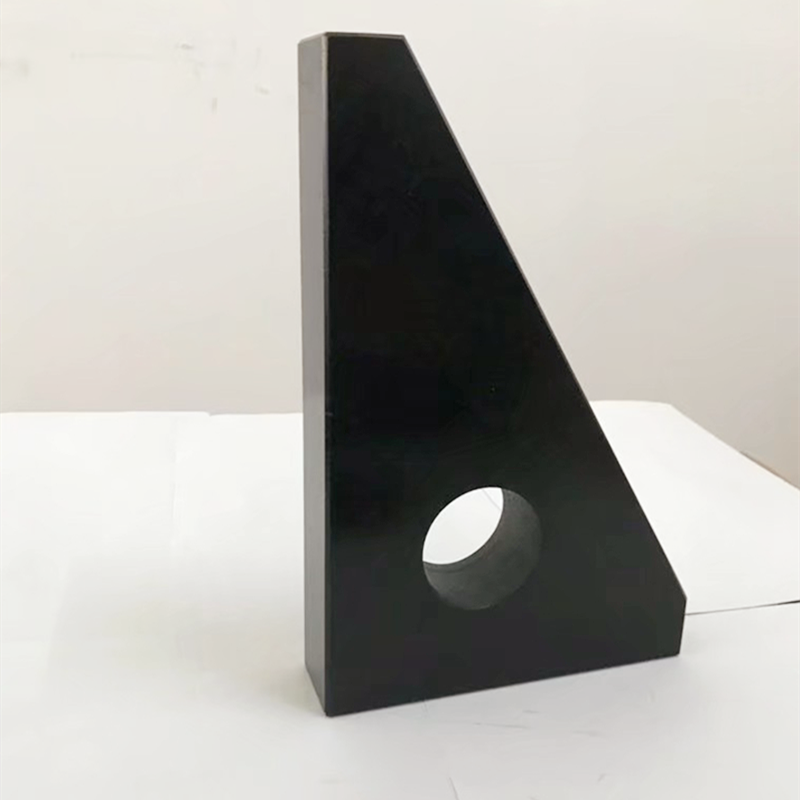des. . 04, 2024 09:29 Back to list
v block & clamp
Understanding V-Block and Clamp Essential Tools in Precision Machining
In the realm of precision machining and manufacturing, the selection and use of appropriate tools and fixtures are paramount. Among these tools, the V-block and clamp combination holds significant relevance. These devices are designed to enhance efficiency, accuracy, and safety in various machining processes, making them indispensable in workshops, tool rooms, and manufacturing floors.
What is a V-Block?
A V-block is a type of workholding tool that has a V-shaped groove cut along its length. This design allows cylindrical and round objects to be securely positioned and stabilized within the block. Typically made from hardened steel or aluminum, V-blocks come in various sizes to accommodate different workpieces ranging from small shafts to larger cylindrical parts. The primary function of a V-block is to provide support and alignment for workpieces during various machining operations, including drilling, milling, and grinding.
The Importance of Clamps in Machining
While a V-block offers support, a clamp plays a vital role in holding the workpiece securely in place against the V-block. Clamps come in various designs—such as toggle clamps, C-clamps, and adjustable clamps—with each type serving unique purposes. Their synergy with V-blocks ensures that the workpiece remains stationary throughout the machining process, reducing the risk of movement that could lead to inaccuracies or defects in the finished product.
Applications of V-Block and Clamp
1. Precision Drilling In operations where precise hole positioning is critical, using a V-block and clamp setup can greatly enhance accuracy. The V-block allows for a stable resting point while the clamp secures the workpiece, preventing any rotation or lateral movement during drilling.
2. Surface Machining For surface grinding or milling, the V-block provides a flat surface that helps in aligning the cylindrical parts. With the clamp ensuring that the part does not shift, machinists can achieve high levels of precision.
3. Inspection and Assembly Beyond machining, V-blocks and clamps are utilized in inspection setups where parts need to be held in place for measuring and quality control purposes. This ensures consistent measurements and reduces errors during assembly.
4. Pipe and Tubing Fabrication In the plumbing and HVAC industries, V-blocks are used to hold pipes securely for cutting, bending, and welding. The clamp secures the pipe in the V-block, allowing for accurate cuts and welds without the risk of displacement.
v block & clamp

Choosing the Right V-Block and Clamp
When selecting a V-block and clamp combination for a specific task, several factors should be considered
- Material The choice of materials affects durability and resistance to wear. Hardened steel V-blocks are excellent for high-volume tasks, while aluminum may be suitable for lighter applications.
- Size and Capacity Selecting the right size ensures that the V-block can accommodate the workpiece securely without risking slippage.
- Type of Clamp The choice of clamps depends on the specific requirements of the machining operation. For example, toggle clamps are great for quick setups, while screw clamps offer greater holding pressure.
- Adjustment Mechanisms Some clamps come with adjustable arms or screws which can accommodate varying sizes and shapes of workpieces, enhancing versatility.
Best Practices for Use
To maximize the effectiveness of V-blocks and clamps, operators should follow best practices
1. Inspect Before Use Always check the condition of both the V-block and clamp for signs of wear or damage. 2. Proper Setup Ensure that the workpiece is positioned correctly in the V-block and that the clamp is firmly tightened without excessive force that may deform the part. 3. Regular Maintenance Clean and maintain the tools regularly to prevent corrosion and wear.
Conclusion
In conclusion, the V-block and clamp are vital components in the toolkit of machinists and manufacturers. Their ability to provide stability, precision, and ease of use makes them essential for a variety of machining applications. By understanding their functionalities and implementing best practices, operators can significantly improve their machining processes, leading to better-quality products and enhanced productivity. As technology continues to advance, so too will the designs and capabilities of these indispensable tools, ensuring they remain relevant in the ever-evolving landscape of manufacturing.
-
Why Metric Trapezoidal Thread is Ideal for Precision Motion ControlNewsAug.05,2025
-
The Unique Properties of a Block of Granite for Industrial UseNewsAug.05,2025
-
The Role of Flanged Y Strainers in Preventing Pipeline ClogsNewsAug.05,2025
-
The Importance of Regular Calibration for Master Ring GagesNewsAug.05,2025
-
How a Cast Iron Surface Table Enhances Accuracy in ManufacturingNewsAug.05,2025
-
Comparing Different Check Valve Types for Optimal Flow ControlNewsAug.05,2025
Related PRODUCTS









